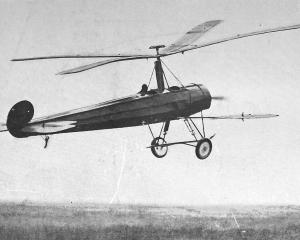
Dr McNab’s father was then one of the pioneer farmers of Southland, and was rearing his family on the Knapdale homestead. The whole household, of which Mr McQueen was then a member, was stricken down, with two exceptions. These exceptions were Mrs McNab and Mr McQueen, who devoted his whole attention to nursing Robert McNab, then about seven years old. Robert pulled through, but four brothers and a sister died. The cause of death was dysentery or British cholera. The same trouble appeared on other homesteads in the neighbourhood. A sister of Mrs McNab (Mrs Copland, of One Tree Point), who was staying at the McNab homestead at the time, nursing a child, was ordered by the doctor to return to her home at once. She did so, but both she and the child contracted the sickness, and the infant died, as also did one of Mrs Copland’s sons, who was about four years old. Mr Copland and another boy also fell sick, but recovered. There were other deaths in the district at the time, and the epidemic also caused considerable mortality in Tasmania. Mrs Cameron, of Glendhu, whose family contracted the illness, was out of reach of a doctor, and afterwards claimed to have cured her children with whisky.
• At Trentham camp a new obstacle course has been constructed in the engineers’ park, under the supervision of Major F. Waite, D.S.O., New Zealand Divisional Engineers, who left with the Main Body, won his D.S.O. on Gallipoli, and is now chief engineer instructor at Trentham. The obstacles have been up for some days now, and were first brought into use on Thursday afternoon, when the officers and non-commissioned officers of the 26th Reinforcements were tried over them. Regular training over the course was commenced on Friday (says the Wellington Post), when the officers and non-commissioned officers of the 26ths were set the task of negotiating the obstacles. The course, which has a total length of 200 yards, presents eight different obstacles, placed at regular intervals of 25 yards. These certainly require some getting over, and in their numerical order may be described as follows: —
1. A 2ft jump over a wooden trestle 2ft high.
2. A sandbag wall 5ft high by 3 ft across.
3. A wooden wall, closely boarded, 6ft 6in high, with no possible grip anywhere except the top beam, which measures about 3in across.
4. A water jump 5ft across (this is a dug ditch at present).
5. A trench 3ft wide with the parapet 2ft 6in high on the far side.
6. A gradually rising parapet with a 5ft jump across a trench on the far side.
7. Posts and rails 7ft high.
8. Single planks 9in wide erected in rows of posts 4ft 6in high and presented end on to the approaching soldier, who is obliged to cross them at a run, mounting by means of a sloping plank of the same width, which is specially provided. Taken as a whole, the course is far from being an impossible one, but it is quite difficult enough for all that, and has only to be tackled once, four men at a time, with others following close behind and under the eye of the instructor, for it to earn due respect.
• While many instances of keen enthusiasm have been recorded in connection with the enlistment of soldiers from the overseas dominions, the patriotism of a Canadian trapper who walked 224 miles in order to enlist probably establishes a record for cases of the kind. His story is told by Captain J. Halton Brown, a prominent Canadian recruiting officer, now in Auckland. Having decided that the life of a soldier was better than that of a trapper, this man left his home in the woods of Northern Canada, and travelled on foot into Le Pas, Manitoba North, where one of the first men he met was Captain Brown.
"How would you like to join the army to-day?" asked the officer.
"Sure," was the reply, "Haven’t I just walked 224 miles to sign up?"
The attestation papers were promptly signed, and a few moments later this sturdy volunteer was passed by the doctor. — ODT, 13.2.1917.
• COPIES OF PICTURE AVAILABLE FROM ODT FRONT OFFICE, LOWER STUART ST, OR WWW.OTAGOIMAGES.CO.NZ












